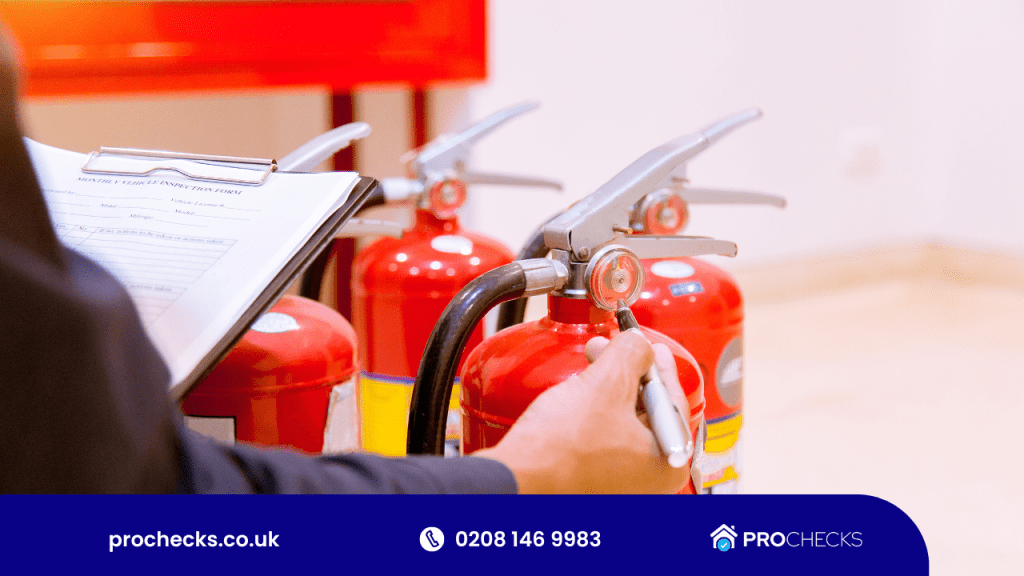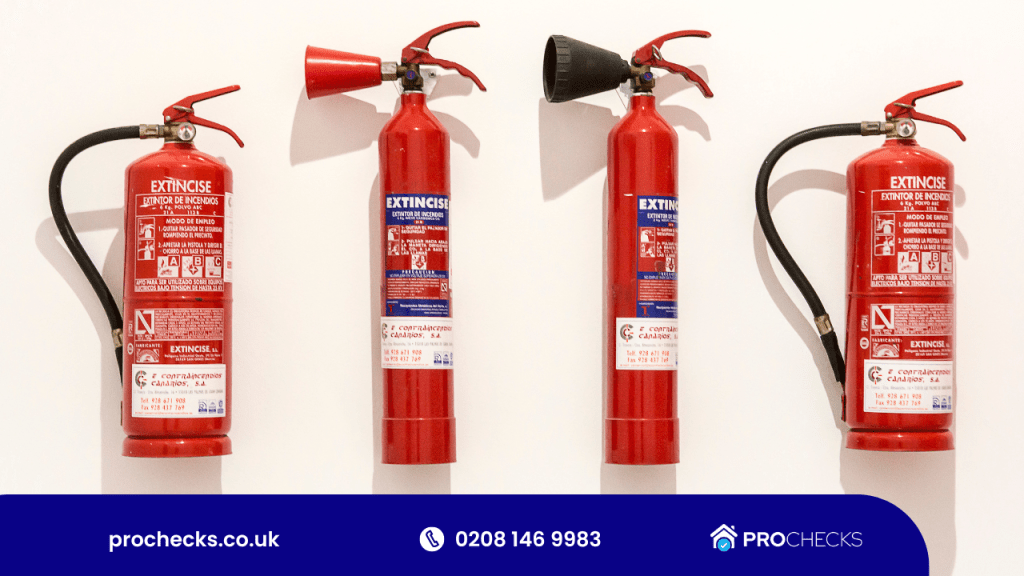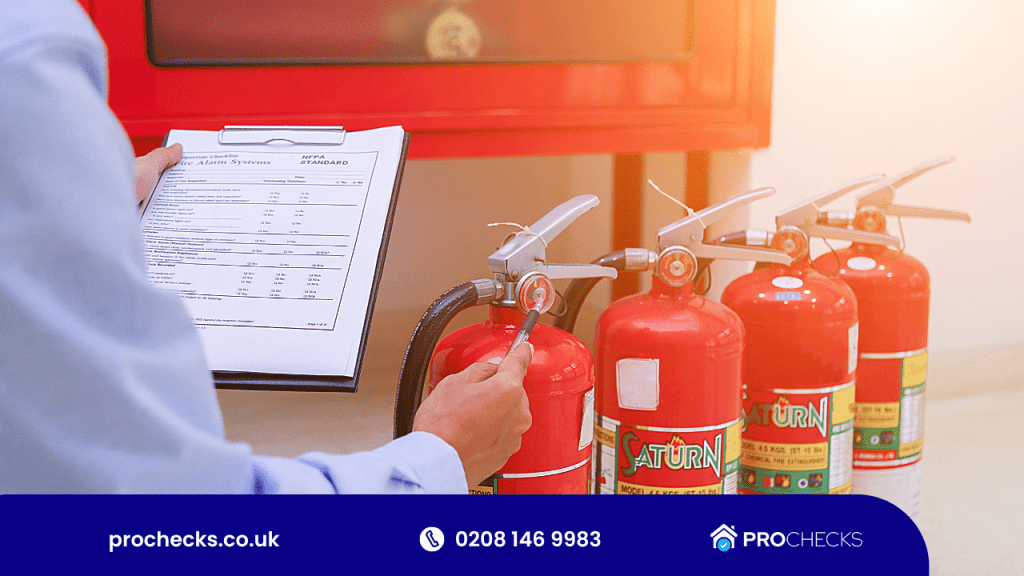In the United Kingdom, meticulous adherence to fire extinguisher regulations is not only a legal requirement but a fundamental aspect of fire safety management. Governed by the Regulatory Reform (Fire Safety) Order 2005, these regulations stipulate the type, installation, and maintenance of fire extinguishers in premises across various sectors. Achieving compliance, however, involves navigating a complex landscape of guidelines that dictate everything from the suitable extinguisher for specific fire classes to the placement and frequency of maintenance checks. This raises pertinent questions about the adequacy of current practices and whether they truly serve the intended purpose of minimizing fire risks. What then, might be the overlooked gaps that could potentially undermine the effectiveness of these regulations, Let’s understand the UK Fire Extinguisher Regulations.
What Are Fire Extinguisher Regulations?
Fire extinguisher regulations in the UK are designed to ensure that all buildings are equipped with adequate fire-fighting tools to handle emergencies effectively.
These regulations stipulate the types of fire extinguishers required based on the specific fire risks associated with different environments. There are several primary fire extinguisher types mandated for use in various settings: water, foam, dry powder, carbon dioxide (CO2), and wet chemical extinguishers. Each type is tailored to combat specific classes of fires, such as electrical, flammable liquids, or cooking oils, ensuring a targeted and effective response to fire outbreaks.

Moreover, the regulations require regular fire safety inspections to maintain the operational integrity of these extinguishers.
These inspections are critical to ensure that all fire extinguishers are in good working condition, are accessible during an emergency, and are appropriate for the fire risks present in the building. The Regulatory Reform (Fire Safety) Order 2005 mandates that these inspections be carried out annually by a competent person, alongside monthly checks by the designated responsible person on the premises.
Compliance with these detailed guidelines is crucial for ensuring the safety and preparedness of all occupants in any building across the UK.
Why Are These Regulations Important?
Understanding the significance of UK fire extinguisher regulations extends beyond mere compliance; it directly impacts the safety and well-being of all building occupants. These regulations are critical as they form a fundamental part of a comprehensive fire safety strategy, designed to minimize the risks associated with fire incidents.
By mandating the presence, accessibility, and maintenance of fire extinguishers, the regulations ensure that facilities are equipped to respond effectively to fire outbreaks, thereby protecting lives and preventing major property damage.
A key component of these regulations is the requirement for an accurate and thorough fire risk assessment. This assessment guides the strategic placement and type of fire extinguishers, tailored to the specific risks identified in various areas of a building.
It ensures that the measures in place are capable of addressing the unique fire hazards present, which might vary significantly between different locations and types of use within a single building.
Moreover, adherence to these regulations not only enhances the safety profile of buildings but also instills a culture of safety among occupants. Regular training and drills, as prescribed, reinforce this awareness, making individuals more prepared and significantly reducing the potential impact of fire emergencies.
What Types of Fire Extinguishers Are Used in the UK?
In the UK, various types of fire extinguishers are utilized to combat different classes of fires, ensuring tailored responses to specific fire hazards. The selection of fire extinguishers is governed by a thorough understanding of fire extinguisher classifications and features, which align with the unique requirements of each environment.
These classifications are crucial in directing the appropriate response to fires involving different materials.

Water extinguishers are primarily used for Class A fires, which include common combustibles such as wood, paper, and textiles. Foam extinguishers are effective against Class A and B fires, the latter involving flammable liquids.
CO2 extinguishers are indispensable for electrical fires and are also used on Class B fires. Dry powder extinguishers offer a versatile solution, covering Class A, B, and C fires, which include gases.
Wet chemical extinguishers are specifically designed for Class F fires, typically involving cooking oils and fats.
Each type of extinguisher is equipped with specific features that enhance its effectiveness against particular fire classes. For example, foam extinguishers have a spray nozzle to safely distribute the extinguishing agent without spreading the flammable liquid.
Understanding these features and their applications ensures that fire safety measures are both efficient and compliant with UK regulations.
Placement Guidelines
Strategic placement of fire extinguishers is critical for effective fire emergency response, ensuring that these essential tools are readily accessible when needed.
The UK regulations stipulate specific guidelines to maximize extinguisher visibility and meet accessibility standards, which are crucial for rapid action during a fire incident. Implementing these guidelines not only complies with legal requirements but also enhances safety for all occupants.
Key placement guidelines include:
- Visibility: Extinguishers should be placed where they can be easily seen. Avoid locations where they might be obscured by equipment or furniture.
- Accessibility: Extinguishers must be readily accessible and unobstructed at all times, allowing for quick and easy retrieval.
- Proximity to Fire Hazards: Ideally, extinguishers should be located near potential fire risks but in a safe location that does not expose the user to undue risk.
- Height Regulations: Mounting heights should not exceed 1.5 meters from the floor, making them reachable for all potential users.
- Signage: Adequate signage should be posted to direct individuals to extinguisher locations, enhancing visibility and awareness.
Adhering to these guidelines ensures that fire extinguishers are both functional and effective in an emergency, supporting swift and decisive fire-fighting actions.
Compliance and Certification
Compliance with fire extinguisher regulations is mandatory under the Regulatory Reform (Fire Safety) Order 2005 for all non-domestic premises in the UK. Ensuring adherence not only mitigates the risk of legal penalties but also safeguards lives and property.

The certification process is a critical component of this compliance, serving as a formal validation that the installed fire extinguishers meet the stringent requirements set forth by UK safety standards, particularly those specified in BS 5306.
The certification process involves thorough inspections and assessments by certified professionals who verify the suitability, functionality, and accessibility of fire extinguishers. Compliance audits are conducted regularly to ensure ongoing adherence to fire safety regulations.
During these audits, every aspect of fire extinguisher provision is scrutinized, from correct signage and placement to the adequacy of the current fire extinguisher types for specific fire risks present in the premises.
Successful completion of these audits results in the issuance of compliance certificates, which must be prominently displayed and maintained up-to-date. Non-compliance discovered during these audits can lead to significant legal consequences, including fines or more severe penalties, emphasizing the importance of regular review and adherence to the prescribed fire safety practices.
Maintenance Requirements
Regular maintenance of fire extinguishers is not only a regulatory requirement but also a critical safety measure to ensure their functionality and effectiveness during emergencies.
Ensuring compliance with UK fire safety regulations involves adhering to strict maintenance protocols, which are essential for the operational integrity of fire extinguishers. These protocols are specified under British Standards (BS 5306) and include a variety of procedures to maintain the readiness and effectiveness of firefighting equipment.

Here are the key maintenance requirements:
- Inspection Frequency: Monthly visual inspections by the responsible person to check for accessibility, signs of damage, and correct pressure levels. Annual professional inspections are mandatory.
- Servicing Standards: Conduct comprehensive annual servicing by certified technicians to ensure mechanical parts, agents, and expellants are within safety specifications.
- Record Keeping: Maintain detailed records of all inspections, servicing, and any actions taken, including the date and the person who performed the service.
- Replacement and Disposal: Follow guidelines for the timely replacement or refilling of extinguishers and safe disposal of outdated or damaged units.
- Accessibility and Correct Signage: Regular checks to guarantee that extinguishers are accessible and properly signposted, preventing obstructions and ensuring visibility.
Adherence to these standards is crucial for ensuring that fire extinguishers will function as expected in the event of a fire, thereby safeguarding both property and lives.
Staff Training Essentials
While ensuring the physical upkeep of fire extinguishers is fundamental, equally important is the proper training of staff on their usage. Comprehensive staff training not only enhances fire safety awareness but also ensures that all employees can respond effectively in the event of a fire. The Regulatory Reform (Fire Safety) Order 2005 mandates that all staff be familiar with the operation of fire extinguishers provided on the premises.
Training should cover the types of fires each extinguisher class can address and the operation of various models. The training frequency must align with regulatory requirements, generally at least annually, to accommodate new staff and refresh the knowledge of existing employees.
It’s essential that training sessions include practical demonstrations, enabling staff to physically handle the equipment under supervised conditions, which can significantly boost confidence and efficiency in real emergencies.
Moreover, fire safety training should be tailored to the specific risks associated with the workplace environment, ensuring relevance and immediate applicability. Documenting all training activities is crucial for compliance and for evaluating the effectiveness of the training program.
Ultimately, regular and rigorous training forms the backbone of workplace fire safety and emergency preparedness, safeguarding both personnel and property.
Emergency Response Procedures
To effectively manage a fire emergency, it is essential that all personnel are well-versed in the organization’s emergency response procedures. These protocols are designed to assure a systematic and safe response to fire incidents, minimizing risks and protecting both life and property.

Key components of robust emergency response procedures include:
- Regular Fire Safety Drills: Ensuring that all staff participate in scheduled fire safety drills to familiarize them with the evacuation plans and use of fire extinguishers.
- Clear Evacuation Plans: Detailed maps and routes are displayed prominently in all areas, showing the quickest and safest paths to exit the building.
- Immediate Alert Systems: Installation and maintenance of automatic fire alarms that promptly notify all occupants and emergency services at the first sign of a fire.
- Role Assignments: Designation of specific responsibilities to trained personnel, including evacuation marshals and first aid providers.
- Post-Evacuation Assembly Points: Marked safe assembly points outside the building to account for all personnel following an evacuation.
These measures, when implemented effectively, form the backbone of a prepared and compliant environment, significantly enhancing safety and reducing the potential impact of fire emergencies.
Frequently Asked Questions
Can Tenants in Rented Properties Install Additional Fire Extinguishers?
Tenants seeking to enhance safety by installing additional fire extinguishers should consult their lease agreements and collaborate with landlords to ensure compliance with existing safety protocols and avoid potential legal or contractual conflicts.
How Do Fire Extinguisher Regulations Differ for Historic Buildings?
Historic building requirements mandate tailored fire safety compliance to preserve structural integrity while ensuring effective emergency response. Adaptations in extinguisher types and placements are often necessary, respecting architectural preservation alongside modern safety standards.
Are There Exemptions for Small Businesses Under UK Fire Regulations?
Small business exemptions under UK fire regulations are limited; all businesses must adhere to fire safety compliance to ensure the protection of life and property, regardless of size. Regular risk assessments and equipment maintenance are mandatory.
What Happens to Outdated Fire Extinguishers Under UK Law?
Outdated fire extinguishers must be disposed of according to fire safety compliance protocols. Disposal procedures ensure environmental protection and prevent hazards. It’s crucial to consult professionals for compliant and safe disposal of non-functional extinguishers.
Do Fire Extinguisher Regulations Apply to Vehicles Used for Business?
Vehicle safety standards mandate that businesses ensure compliance by equipping commercial vehicles with appropriate fire extinguishers, fostering a safer work environment, and adhering to essential safety protocols for emergency preparedness.
Conclusion
In conclusion, adherence to UK Fire Extinguisher Regulations is crucial for ensuring the safety and preparedness of buildings against fires. These regulations, encompassing the correct selection, placement, and maintenance of fire extinguishers, are essential for mitigating fire risks effectively. Regular inspections and staff training further enhance the reliability of fire safety measures. Compliance not only aligns with legal mandates but also significantly contributes to the overall safety culture within facilities, ultimately safeguarding lives and property.









